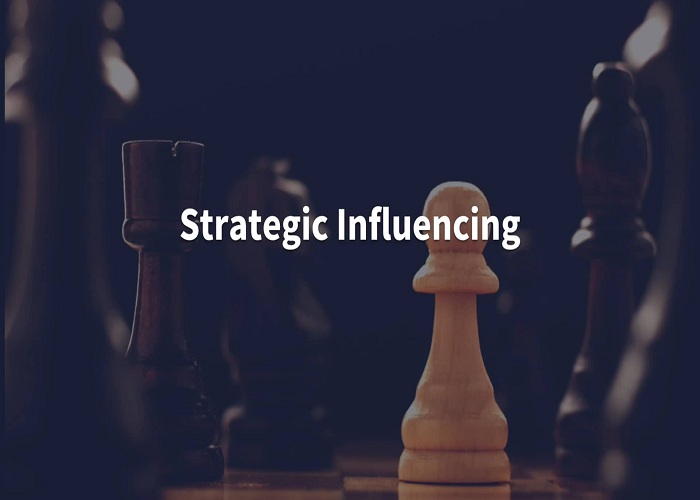




Getting things done and getting ahead in your organisation is all about using the resources you have at your command to influence stakeholders and influence outcomes. With the right strategy and skills, the task of influencing becomes effortless, but with a wrong approach you’ll be pushing the myth of Sisyphus up the hill.
Good News and Bad News
Well, the good news is that there’s nothing mysterious about influencing, no rocket science just some reprogramming of the brain and some sharpening of the skills. The bad news is that there’s something mysterious about influencing. Just discipline, endeavour and hard work.
Inside the Mysterious Art of Influencing
Think of influencing like going on a safari. You’ll need to plan the trip, select the right vehicle, ensure you’ve packed adequate supplies, pinpoint camp sites and observation points – all this stuff is the strategic part.
When you’re on the road (or off the road), you’ll need to stay alert, anticipate pot-holes, change the odd flat tyre, erect a tent, cook your dinner. All the skills that will keep you alive, help you deal with unexpected situations and ensure you reach your destination.
Influencing in your organisation is no different, apart from the wild animals, well that depends I guess…
Situational Influencing
In order to successfully influence outcomes, you will need to cultivate your skills for situational influencing. Think of these as your ‘close combat skills’ that help you to influence when sitting face-to-face with a key stakeholder.
These are the skills that help you build a connection quickly, maximise limited stakeholder contact time, quickly understand hidden agendas and influence when you have limited authority or power.
Strategic Influencing
You will also need to sharpen your strategic influencing skills. These are the tactics, strategies and tools that you will require to engage, gain the support of and influence stakeholders inside and outside your organisation so that your outcomes and goals are achieved.
Strategic Influencing helps you plan a long term influencing initiative, build a coalition, get inside the minds of your stakeholders, anticipate and overcome resistance points, leverage the network you didn’t know you had influence on without holding any traditional authority power.
Plotting the Influencing journey involves 3 key tasks;
1. Know your stakeholders -A stakeholder is someone that can influence the decision making process in some way, both directly and indirectly. These are not always obvious For example, assuming your CEO is a key stakeholder, their Personal Assistant is unlikely to have any direct influence over decision making but they will control access to the CEO’s date diary – so they’ll be an important stakeholder.
2. Know what power you hold (and don’t hold) -When we think of power within any organisation we often think about power in the traditional sense. In other words, the person who is most senior by title or has the authority to hire and fire is seen as the most powerful. But there are many different types of power that exist and can be used effectively, providing you know what power you hold in relation to each stakeholder. This is referred to as resource power.
Understanding your own source of power and the power held by those you are seeking to influence enables you to plan a strategy that allows you to compensate for any imbalance in power and fully access the power you do have but may be unaware of.
3. Understand the hidden agendas (If any) of your stakeholders – There are two ways of thinking about the hidden agendas of your stakeholders. The first relates to the particular interests that a stakeholder may have in relation to your proposal or initiative. The second relates to their concerns about your proposal or initiative.
4. Stakeholder Concerns and Interests – Interests are defined as any criteria that need to be met so that a solution or decision can be supported. It’s important to note that stakeholder interests are very different from stakeholder positions. Often stakeholders will adopt positions in relation to an influencing initiative. For example, they might say that “…your proposal will take too long to implement“, this represents a statement of their position in relation to your proposal. What they might be trying to say is that “…I don’t have the time or resources to devote to your initiative”. This response still doesn’t reveal their interests but at least gives you a clue as to the direction of further inquiry.
Maximise Success – Strategic Influencing
Understanding your influencing environment is a fundamental component of your strategic influencing toolkit. If you’ve done a thorough job then you’ll know exactly;
1. Which stakeholders to lobby
2. How to lobby them
3. In what order to lobby them
4. How to overcome your limitations in power
5. How to mitigate resistance and objections
Being strategic about who, how and when you influence your stakeholders is just as important as cultivating your interpersonal skills so when you’ve got 10 minutes with your CEO, you maximise the opportunity to influence and minimise the risk of looking like a lemon.
Source: https://www.linkedin.com/pulse/understanding-mysterious-art-influencing-environment-sahil-gupta